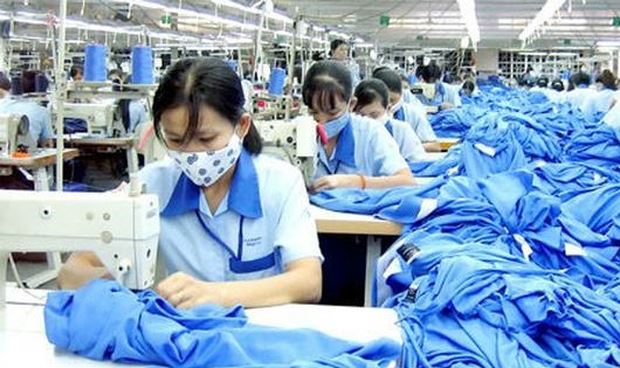OBM, ODM Modes Considered For Vietnams Textile And Production


Vietnam is a big garment exporter
Worldon Vietnam is a 100 percent foreign owned subsidiary of Shen Zhou Group in Dong Nam IZ in HCMC. After receiving a certificate on increasing investment capital in Vietnam to $140 million in 2014, it began building a center for fashion design and high-quality knitwear to lower production costs and enjoy the preferential export tariff of zero percent.
Analysts said if Vietnamese enterprises followed the ODM (original design manufacturer) and OBM modes, they would be able to increase the profit margin by 30-40 percent or even 100 percent.
Vietnam exported $31 billion worth of textiles and garments in 2017. To obtain this export turnover, it had to import $19 billion worth of input materials. If deducting the input materials for making products for domestic consumption, the textile and garment industry would see an excess of exports over imports of $15.5 billion, the highest level so far.
Vietnam exported $31 billion worth of textiles and garments in 2017. To obtain this export turnover, it had to import $19 billion worth of input materials. |
David Marshall, managing director of Marshall Investment Fund, one of 12 Australian leading funds, said investors are relocating textile factories from Bangkok and Hong Kong to Vietnam to minimize production costs.
Experts commented that in order to enhance Vietnam’s position in the global value chain, Vietnamese enterprises have no other choice than to change the production method.
Some textile companies have shifted from doing outsourcing, or OEM (original equipment manufacturer), to selling finished products, or FOB (free on board), and higher levels, including ODM and OBM.
Nevertheless, only a few enterprises can do this. According to the Vietnam Textile & Apparel Association (Vitas), 70 percent of enterprises are still following OEM and 20 percent follow FOB.
The figures of these enterprises remain modest, 9 percent for ODM and 1 percent for OBM.
While analysts believe that CPTPP, the trade agreement that Vietnam has recently signed, will bring big benefits to Vietnam’s textile and garment industry with expected growth rates of 8-13 percent in export turnover, Vitas secretary general Truong Van Cam is cautious when talking about the opportunities of the industry.
He said though the opportunities are great, the weak point in input material sources may contain Vietnamese enterprises.
CPTPP includes countries strong in textile and garment exports, such as Mexico, Peru and Malaysia, which are rivals of Vietnam as they can control material supply sources.
Vietnamese enterprises need to take the initiative in building a supply chain with emphasis on input material supply.
RELATED NEWS
Textile & garment projects revived, but face new barriers
Garment manufacturers feel pressure from foreign fashion brands
Thanh Lich
Vietjet Launches Four Routes Linking Top Destinations Of Việt Nam And India
Vietjet has officially launched four more services linking top destinations of Việt Nam and India including HCM Ci... Read more
Sacombank To Recruit 300 Staff By July
Sacombank is set to hire 300 employees by the end of July for positions like personal/corporate customer service ass... Read more
"Fly First-Pay Later" By MOVI And Vietjet Wins Technology Award
“Fly first - Pay later” is an 100 per cent online financial product that first appeared on the Vietnamese market... Read more
EXIM Thailand Opens Representative Office In HCM City, Inks Credit Deal With BIDV
The Export-Import Bank of Thailand has agreed to provide the Bank for Investment and Development of Việt Nam with ... Read more
Vietjet Launches Two Routes To India
The two newest routes, which will operate 3 and 4 round-trip flights per week respectively, are expected to continu... Read more
Vietjet Develops E-logistics, Pays 20 Per Cent Stock Dividend
The budget carrier expects to earn more than VNĐ22.3 trillion (US$959 million) in air transport revenue in 2022 Read more

